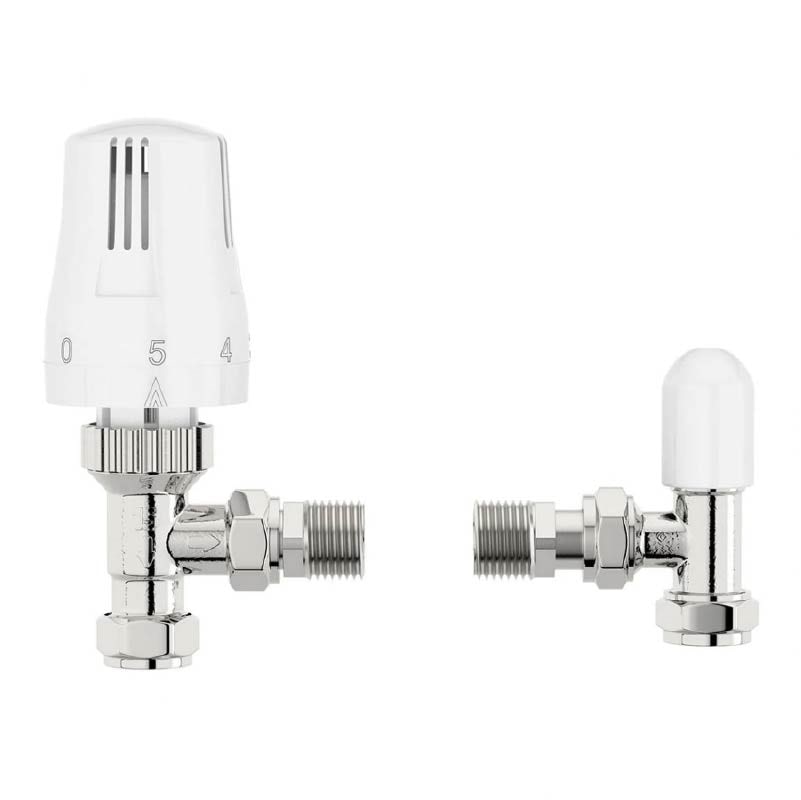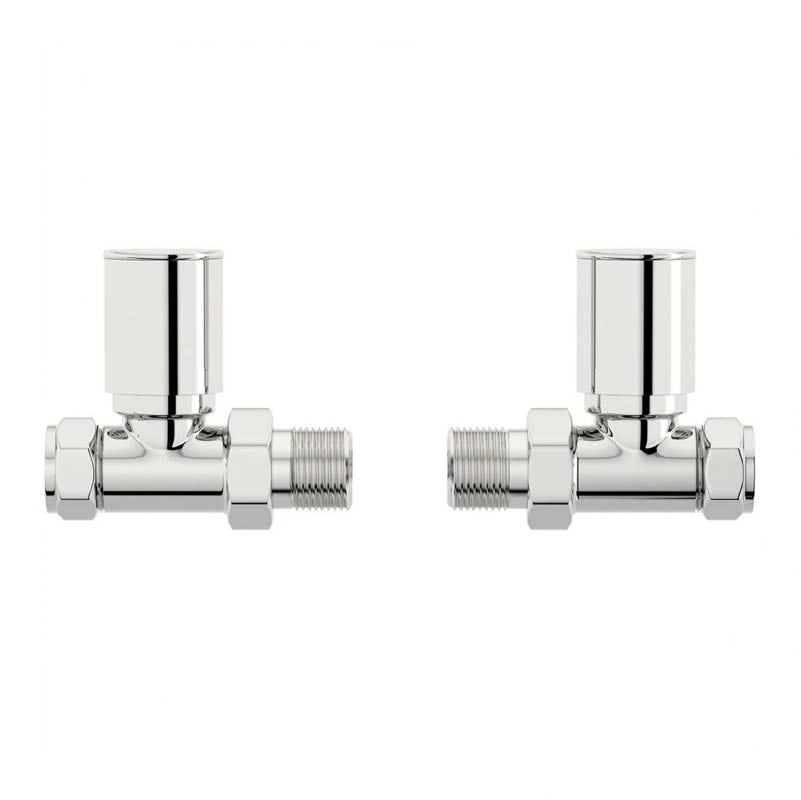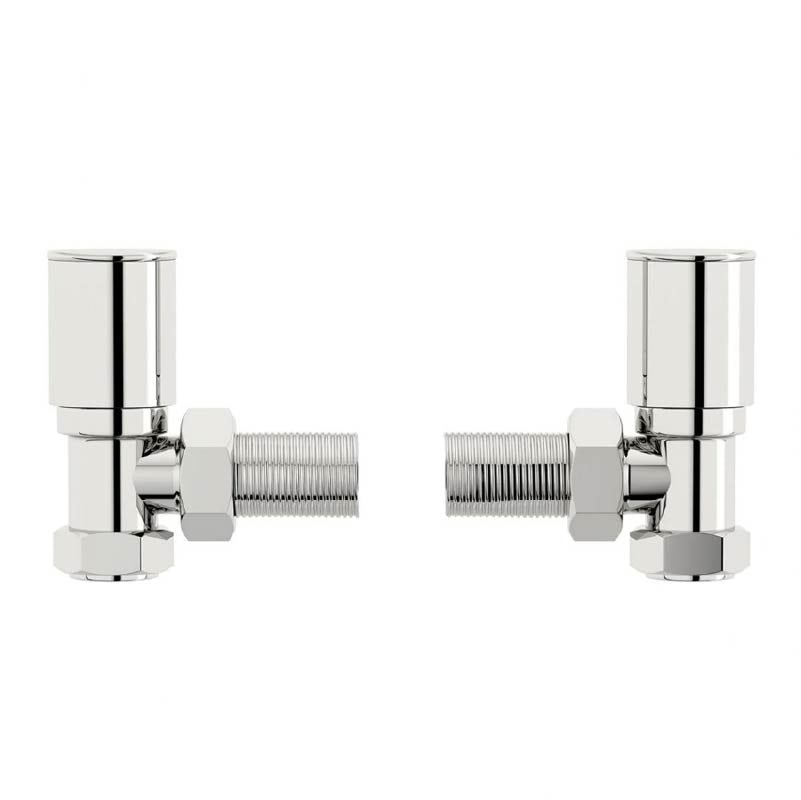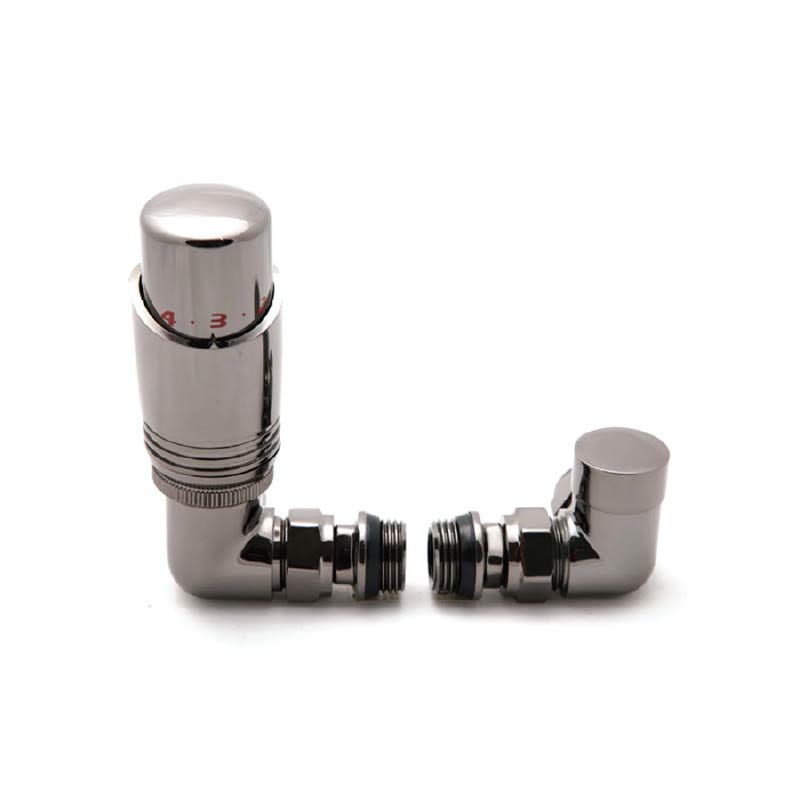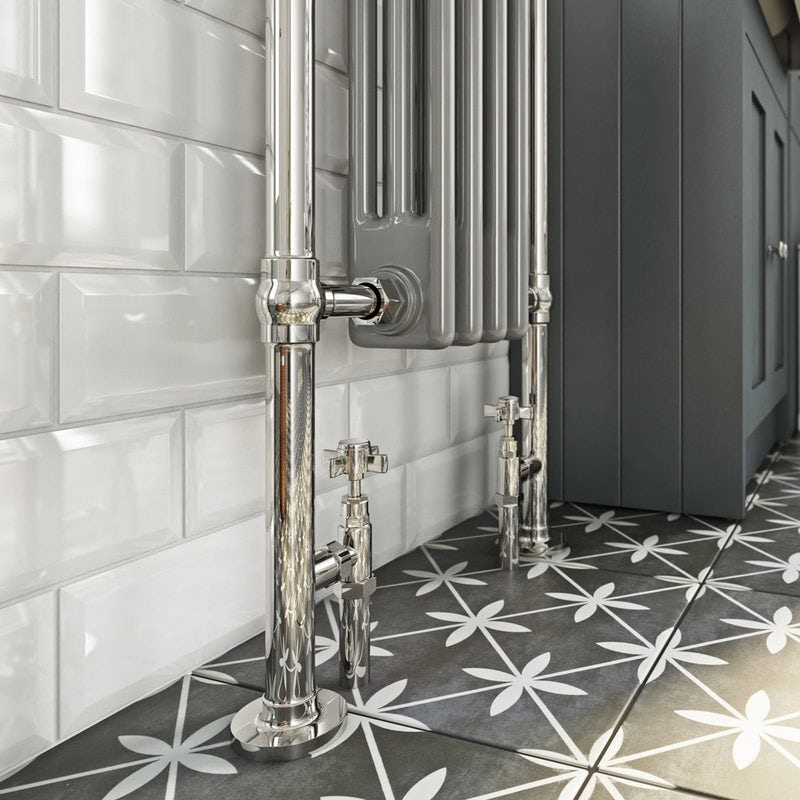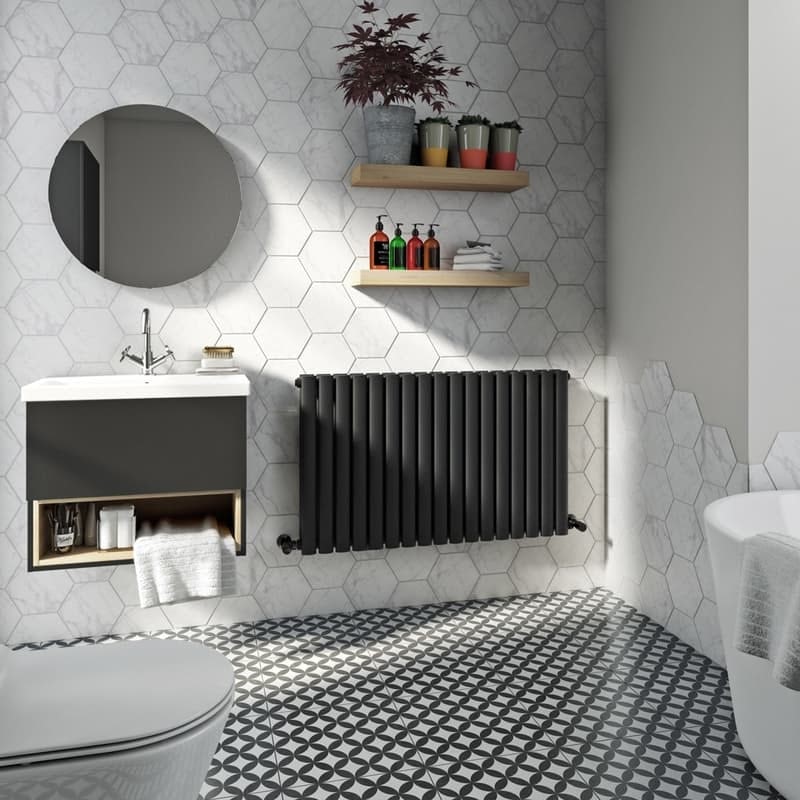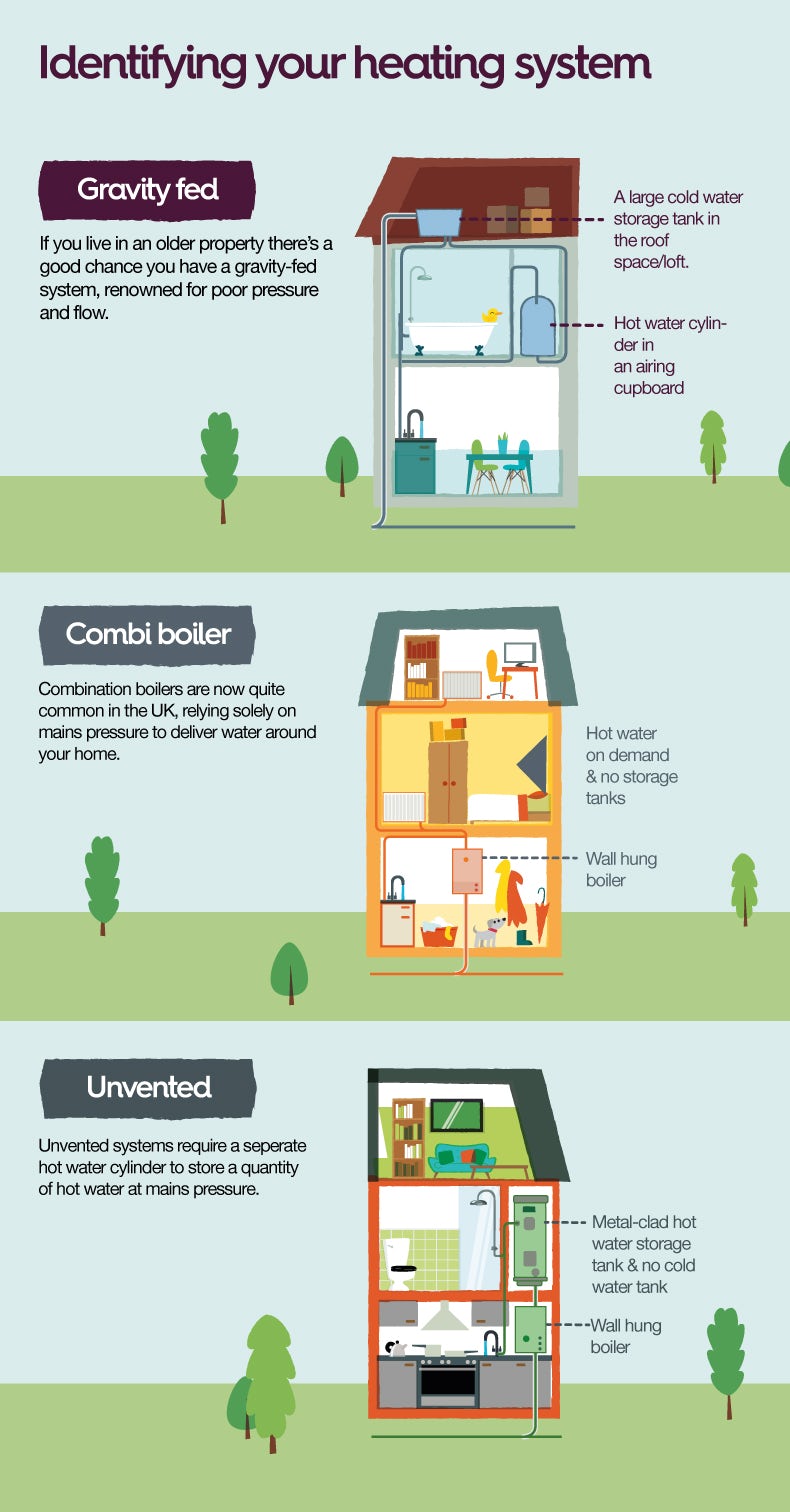Is your home heating system as efficient as it could be? By changing your radiator valve, you could save money on your bills. We show you how…
When the time comes for a change, fitting a new valve onto your radiator or heated towel rail isn’t as difficult as you might think. While they may be small, a radiator valve plays a mighty big role in the performance level of your central heating system. It ensures heat transfer occurs efficiently, so rooms are heated to just the right level, meaning you aren’t burning through cash when paying your heating bills.
At this point, it is certainly worth pointing out that, unless you are confident in taking on more advanced DIY, it is always better to hire an experienced trade professional to deal with any plumbing or heating issues in your home.
In this article we show you how to change your radiator valves and explain the different types you can buy for your home. If you're looking to carry out a full replacement, check out our guide to replacing your radiator.
Click on any of the links below to jump to a relevant section.
- Why do you need to change the radiator valves?
- How do thermostatic radiator valves (TRVs) work?
- What are the different types of radiator valve?
- Do you need to turn the water off to change a radiator?
- Can you change radiator valves without draining the system?
- How to change a radiator valve by draining the system
- How do radiators work?
- More DIY advice
- Shop radiator valves
Why do you need to change the radiator valves?
While it may not seem the like the most pressing task on any home snagging list, there are several ways in which your central heating system can benefit from changing a radiator valve. In fact, a new valve can have a big impact on how your heating system performance performs, helping to save you money in the long run.
Replacing faulty radiator valves
Like anything else in your home, over time radiator valves will experience wear and tear and could become faulty. This may lead to the radiator valve becoming stuck or even springing a leak. To get the most out of your central heating system, this needs to be fixed as soon as possible.
Stylistic choice
You might want to install a new radiator valve because the old one simply doesn’t match your new décor. Even the smallest of changes can make a big difference to the overall look of a room and there are a huge variety of radiator valve styles you can choose from to match your personal taste.
Switching to thermostatic radiator valve (TRV) systems
Thermostatic radiator valves (TRV) are more efficient at heating indoor spaces than regular manual valves, giving you greater control throughout the year, which will ultimately lead to lower heating bills.
How do thermostatic radiator valves (TRVs) work?
A TRV is designed to be more efficient and conserve energy in your home by adjusting the flow of water into your radiator, based on the setting.
The thermostatic element is fitted to the top portion of the valve, with the valve head expanding as the temperature in your room changes. This controls a pin in the body of the valve, allowing it to open or close. As your room gets warmer, the radiator uses less hot water and, conversely, as the room starts to cool, more hot water is used.
There are 2 different types of thermostatic valve systems. Wax models were the first to be manufactured and, more recently, liquid thermostatic radiator valve systems have arrived on the market. Liquid-based models can adjust to the fluctuating heat in the room at a faster rate and are becoming more commonplace as a result.
What are the different types of radiator valve?
It’s easy to overlook your valves, when replacing a radiator or heated towel rail. Usually, all your attention is focused on the radiator itself, for obvious reasons, but your choice of valve is equally important.
When you start shopping around for a new valve, you’ll soon see just how many options are available. From traditional, to modern or contemporary, finding the right style is easy enough—but what is the best type for your radiators and central heating system?
Below, we explain some of the most common options, so you can make a much more informed decision about buying a new valve.
Straight radiator valves
The water heading into straight valves does not travel through any angles or other diversions, which is where it gets its name. These are ideal for radiators where piping runs along the wall directly into the radiator. Alternatively, they work just as well on piping that comes up through the floor.
Angled radiator valves
Angled valves are a common type of valve found in UK homes. The valve is positioned at an angle of around 90 degrees to the central heating pipe. Pipework that comes out of the floor or wall is usually best suited to these types of valves. They are very popular in minimalist, contemporary style homes, where most of the pipework is concealed.
H-Block valves
If you have a middle or central connection radiator in your home, then an H-Block valve will be the most suitable option. These sit underneath the radiator and are less obtrusive, especially if placed onto a heated towel rail. They may also be a little easier to install than angled or straight valves.
Corner radiator valves
Corner radiator valves, also known as flat front valves, are mainly used purely for stylistic reasons. The top of the valve doesn’t face outwards—like an angled valve—but faces inwards and parallel with the wall instead. These can be a little more difficult to adjust than straight valves, so bear this in mind.
Manual radiator valves
A manual radiator valve is the most commonly found type in any UK home. It works in the same way as a tap: turning it one way to let water pass into the radiator and back to other way to shut off the water supply. They remain popular because they’re easy to use—however, unless used with a timed heating system, your bills could skyrocket if you’re not careful.
Do you need to turn the water off to change a radiator?
You shouldn’t need to turn off your water supply to change a radiator valve, as long as you take the necessary steps to protect your flooring.
Before removing the old radiator, lay down some towels beneath it to ensure any escaping water doesn’t damage the floor—especially important if you have hardwood flooring.
Can you change radiator valves without draining the system?
If you want to change a radiator valve without having to drain your central heating system and turn off the water supply, make sure you have the following tools to hand:
- Radiator bleed key or flat-top screwdriver (for the bleed valves)
- Adjustable spanner (to close the lock-shield valve)
- Towels (to cover the floor) and sponge (to mop up any spillage)
- Small container (when using the bleed key to drain the radiator)
- PTFE tape
- Jointing compound
By following the steps below, we’ll show you how to change a radiator valve without draining the system. If you aren’t comfortable changing radiator valves yourself, it is a good idea to contact a qualified Gas Safe heating engineer.
Step 1: Turn off the valves
Stop the water flow to the radiator by turning off the radiator drain valve. If the radiator has a lock-shield valve, use an adjustable spanner to turn it off.
Step 2: Open the radiator bleed valve
You can use a radiator bleed key or a flat head screwdriver to open the bleed valve. Do this slowly and carefully so air can escape until the radiator is depressurised. Some water may come out of the bleed valve, so it’s a good idea to have a cloth or tub close to hand to prevent it dripping onto the floor. You’ll know this is working when you hear the hissing sound of air leaving the radiator. Once you have finished, make sure you close the bleed valve and tighten (not too tight) back to its original position. This will stop air getting into the radiator which could then lead to water leaking from the bottom.
Step 3: Loosen the cap nuts
You’ll notice there are some large cap nuts located on the radiator tail. Using the spanner, carefully undo these until you hear them click, which means they are close to being fully unscrewed. You should then be able to take the ends of the valves, making it easier to lift the radiator from the wall and down onto the floor. Some water may drip from the valves, so make sure you have towels down to protect your floor.
Step 4: Take the radiator off the wall
Once you have towels in place, slowly lift the radiator out of the wall brackets and radiator tail and rotate it downwards until the top part is touching the towel-covered floor. Make sure the radiator is still attached to the valves so it has created a sloped angle from the wall to the floor.
Step 5: Remove the radiator from the valves
The radiator will be ready to be flipped upside down with the water flowing to the top. Unscrew the last part of the valve nuts and take off the old valve, turning the radiator so it is standing fully upside down (still standing on the towels, as water may come out) on the floor. Move the radiator to another part of the room so it is out of the way while you fit the new radiator valve to the system. If you are installing a new radiator, you can put this in place once finished. When tightening the new valve it is advisable to use PTFE tape on the tail and water jointing compound on the olives. Using the jointing compound will ensure the radiator is then watertight. Also be sure to put the radiator insert back into the valve when refitting, as the radiator insert ensures the valves connect to the radiator.
How to change a radiator valve by draining the system
Whilst you don’t have to drain a heating system in order to change a radiator valve, it is still useful to know how to do this, especially if you wish to clean out the system if too much sludge has built up inside—something which can affect performance levels. A system drain cock is used to drain a whole system—you’ll find it either on the boiler or the lowest-positioned radiator.
-
Turn off the power followed by the water supply going into the expansion tank. Tie up the ball-valve in the tank if there isn’t a stop-valve.
-
Locate the system drain cock which can be identified by a small spout and a square head. It will either be on the boiler or on the lowest pipe in your home.
-
Connect one end of a hose to the drain cock spout. Then connect the other end of the hose to a drain located nearby, ensuring the hose is securely fixed. You can then turn the system drain cock back on using a spanner. Water will run through the hose and into the drain.
-
Start with the radiators at the top of the system and open the bleed valves so any trapped air can be released as the draining takes place.
These are the first few steps of how to change a radiator valve by draining the system, meaning water is no longer present. So, when you follow the steps for changing your valve, which we explained earlier, there should be no leaks.
Now you know how to change the valve on your radiator, it may be worth taking a very quick crash course on how radiators work. Read on…
How do radiators work?
Radiators work using a convection process, which allows the transfer of heat into each unit. Water inside the radiator is heated which allows the surrounding air to also increase in temperature, and as the air circulates the rest of the space is warmed.
A central heating system acts as the main centre to which all radiators in the home will be connected to via a water pipe (or the flow pipe). Hot water flows through these pipes until it is then present inside the radiators, which allows for the convection process to take place.
Hot water doesn’t stay in the radiator; it continues flowing onto the next radiator in the chain. As it passes through the system, it gradually cools down and eventually returns back to the boiler where it is reheated again. As long as the heating system remains active, this process continues on a loop.
Combi boiler heating systems operate a little differently to this. One of the most popular types of home heating system in the UK, with both gas and electric versions available, they don’t require a conventional water cylinder tank to heat water. You can identify your own water heating system by taking a look of the infographic below.
Handy Hints: Head to our radiator buying guide for more information
More DIY advice for bathrooms, kitchens and more
At Victoria Plum, you’ll find expert DIY advice for projects big and small. From bleeding your radiator valves to installing a new towel heater, we have plenty of step-by-step guides, complete with handy videos.
If you’re in need of tips for specific rooms, check out both our bathroom advice and kitchen advice sections.
Shop radiator valves
If your heated towel radiator or radiator valves are in need of a change, why not browse our comprehensive range? We have a huge selection of colours, styles and designs, all at exceptionally low prices. Simply click on the image below to take a look.

